What Is The Codex Sinaiticus And What Does It Mean?
Conny Waters - AncientPages.com - Codex Sinaiticus is one of the four great codices containing ancient, handwritten copies of the entire text of the Greek Bible (Old and New Testament).
It is also one of the two oldest preserved biblical manuscripts (the second is the Vatican Codex kept in Rome).

Detail showing a skeletal parchment feature on Quire 41, folio 4 recto. Image credit: source
Codex Sinaiticus, which literally means 'the Sinai Book', was written on parchment and comes from the middle of the fourth century, from the times of the Roman Empire and Constantine the Great.
It comprises just over 400 large parchment leaves measuring 380 mm high by 345 mm wide. On these parchment leaves is written around half of the Old Testament and Apocrypha (the Septuagint), the whole of the New Testament, and two early Christian texts not found in modern Bibles.
Each line of the text has some twelve to fourteen Greek uncial letters, arranged in four columns (48 lines per column) with carefully chosen line breaks and slightly ragged right edges.
Most of the first part of the manuscript, containing a majority of the so-called historical books, from Genesis to 1 Chronicles, is now missing. It is believed it has been lost.
The number of the books in the New Testament in Codex Sinaiticus is the same as that in modern Bibles in the West, but the order of these books is different. The Letter to the Hebrews is placed after Paul's Second Letter to the Thessalonians, and the Acts of the Apostles between the Pastoral and Catholic Epistles.
The two other early Christian texts include an Epistle written by an unknown author claiming to be the Apostle Barnabas, and 'The Shepherd', was written by the early second-century Roman writer, Hermas.
The history of the Codex Sinaiticus is closely related to the German theologian, paleographer and adventurer Constantin von Tischendorf (1815–1874) who found it in the Egyptian desert of Mount Sinai in the middle of the 19th century.
See also:
Codex Washingtonianus Contains A Passage Not Seen In Any Other Biblical Manuscript
Dresden Codex – Probably The Oldest And Best Preserved Book Of The Maya
Codex Sinaiticus was copied by more than one scribe. Constantine Tischendorf identified four of them, in the nineteenth century. Each of the scribes had an individual way of writing and spelling many sounds, particularly vowels which scribes often wrote phonetically.
".... different scribes wrote the text in four columns on each page. But, more importantly, to include so many texts in one volume confirming the approved selection of Christian scripture, ”required a large number of manuscripts of individual texts or smaller groups of texts from which to copy the text of the
Codex.
It also required the development of a substantial binding structure capable of supporting and containing within one volume over 730 large-format leaves..." pointed out Ekkehard Henschke (Oxford, UK) in "Project Report, Digitising the Hand-Written Bible: The Codex Sinaiticus, its History and Modern Presentation".
By the time the codex was produced, works of literature were increasingly written on sheets that were folded and bound together in a format that we still use to this day.
At present, the Charter of the Sinai Code is kept in four places: St. Catherine’s Monastery near Mount Sinai, the University of Leipzig, the National Library in St. Petersburg and the British Library.
Written by Conny Waters – AncientPages.com Staff Writer
Copyright © AncientPages.com All rights reserved. This material may not be published, broadcast, rewritten or redistributed in whole or part without the express written permission of AncientPages.com
Expand for referencesMore From Ancient Pages
-
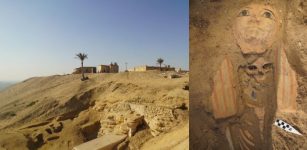 Ancient Egyptian Tombs With Stunning Trove Of Artifacts And Human Remains Unearthed In Saqqara
Archaeology | Jan 17, 2024
Ancient Egyptian Tombs With Stunning Trove Of Artifacts And Human Remains Unearthed In Saqqara
Archaeology | Jan 17, 2024 -
 Extraterrestrial Visit Recorded On Stone: They Came From The Stars
Featured Stories | May 4, 2014
Extraterrestrial Visit Recorded On Stone: They Came From The Stars
Featured Stories | May 4, 2014 -
 Mysterious Standing Deer Stones Of Mongolia -Their Purpose And Creators Remain Unknown
Featured Stories | Jun 18, 2014
Mysterious Standing Deer Stones Of Mongolia -Their Purpose And Creators Remain Unknown
Featured Stories | Jun 18, 2014 -
 Nidhogg – Dreadful Winged Corpse-Eating Dragon Who Is Enemy Of Asgard And Yggdrasil Tree
Featured Stories | May 9, 2020
Nidhogg – Dreadful Winged Corpse-Eating Dragon Who Is Enemy Of Asgard And Yggdrasil Tree
Featured Stories | May 9, 2020 -
 Dolmen de Soto: Unique Millennia-Old Underground Structure Remains A Puzzling Enigma
Featured Stories | Feb 10, 2022
Dolmen de Soto: Unique Millennia-Old Underground Structure Remains A Puzzling Enigma
Featured Stories | Feb 10, 2022 -
 Heimdallr: Norse God That ‘Illuminates The World’ And Guards The Rainbow Bridge Bifrost In Asgard
Featured Stories | Feb 6, 2016
Heimdallr: Norse God That ‘Illuminates The World’ And Guards The Rainbow Bridge Bifrost In Asgard
Featured Stories | Feb 6, 2016 -
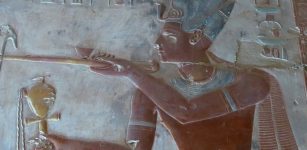 Seti I – Remarkable Pharaoh Who Saved The Kingdom Of Egypt And Gave It New Glory
Featured Stories | Jun 15, 2021
Seti I – Remarkable Pharaoh Who Saved The Kingdom Of Egypt And Gave It New Glory
Featured Stories | Jun 15, 2021 -
 Hayk – Legendary Patriarch And Founder Of Armenia Who Defeated King Bel Of Babylon
Featured Stories | Feb 10, 2022
Hayk – Legendary Patriarch And Founder Of Armenia Who Defeated King Bel Of Babylon
Featured Stories | Feb 10, 2022 -
 Is This The Face of Queen Elizabeth I?
Archaeology | Oct 15, 2018
Is This The Face of Queen Elizabeth I?
Archaeology | Oct 15, 2018 -
 Oldest Preserved Remains Of Bed Bug Found In Paisley Caves, Oregon
Archaeology | Apr 7, 2017
Oldest Preserved Remains Of Bed Bug Found In Paisley Caves, Oregon
Archaeology | Apr 7, 2017 -
 Does This Cathedral Offer Evidence Our Calendar Is ‘Missing’ 297 Years?
Featured Stories | May 6, 2022
Does This Cathedral Offer Evidence Our Calendar Is ‘Missing’ 297 Years?
Featured Stories | May 6, 2022 -
 Archaeologists Reveal 12 Exciting Finds From The Gjellestad Viking Ship Dig
Archaeology | May 28, 2022
Archaeologists Reveal 12 Exciting Finds From The Gjellestad Viking Ship Dig
Archaeology | May 28, 2022 -
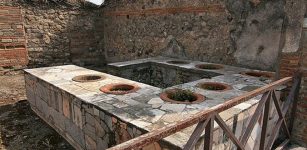 Thermopolium – Ancient Roman Restaurant Offered Fast Food But Was It A Good Idea To Eat There?
Ancient History Facts | Mar 16, 2018
Thermopolium – Ancient Roman Restaurant Offered Fast Food But Was It A Good Idea To Eat There?
Ancient History Facts | Mar 16, 2018 -
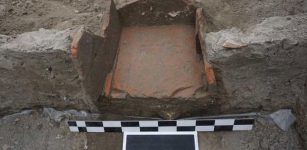 Ancient ‘Refrigerator’ And Unique Coins Discovered In Roman Military Camp In Bulgaria
Archaeology | Oct 3, 2022
Ancient ‘Refrigerator’ And Unique Coins Discovered In Roman Military Camp In Bulgaria
Archaeology | Oct 3, 2022 -
 Explorer Discovered A Lost Underground World Beneath Big Sur In North America – But Why Cannot Anyone Else Find It Now?
Featured Stories | Feb 12, 2019
Explorer Discovered A Lost Underground World Beneath Big Sur In North America – But Why Cannot Anyone Else Find It Now?
Featured Stories | Feb 12, 2019 -
 Can Diseases Explain Why Neanderthals Suddenly Disappeared About 40,000 Years Ago?
Archaeology | Nov 9, 2019
Can Diseases Explain Why Neanderthals Suddenly Disappeared About 40,000 Years Ago?
Archaeology | Nov 9, 2019 -
 Who Was The Mysterious Old Leather Man?
Featured Stories | Sep 1, 2021
Who Was The Mysterious Old Leather Man?
Featured Stories | Sep 1, 2021 -
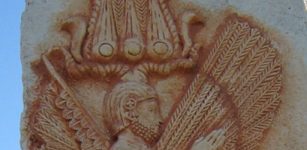 On This Day In History: Cyrus The Great And His Army Took Babylon – On Oct 12, 539 BC
News | Oct 12, 2016
On This Day In History: Cyrus The Great And His Army Took Babylon – On Oct 12, 539 BC
News | Oct 12, 2016 -
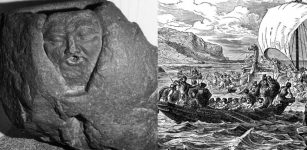 Ancient Mysteries Of Chicago: Is The Puzzling Waubansee Stone A Neglected Pre-Columbian Artifact?
Artifacts | Mar 4, 2017
Ancient Mysteries Of Chicago: Is The Puzzling Waubansee Stone A Neglected Pre-Columbian Artifact?
Artifacts | Mar 4, 2017 -
 The Opening Of Pandora’s Box May Have Been A Real Event
Featured Stories | Jun 22, 2021
The Opening Of Pandora’s Box May Have Been A Real Event
Featured Stories | Jun 22, 2021

